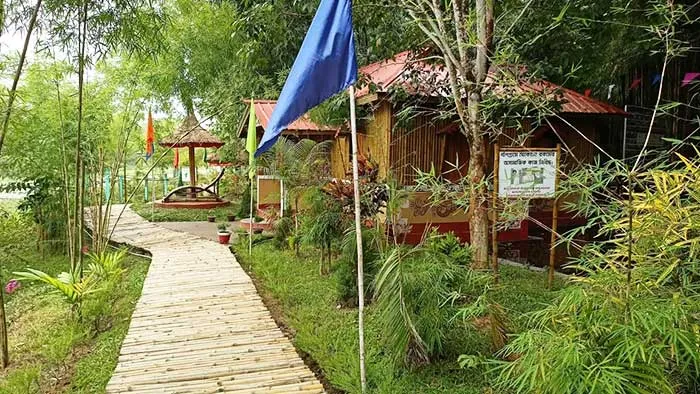Bash Gram: Bamboo Paradise in Tripura Wins Bronze Award on World Tourism Day
WhatsApp Channel
Join Now
Bash Gram located at the Katlamara village in west Tripura, got honoured with a bronze award during the world tourism day, held at Bharat mandapam in new Delhi on 27 September. Tourism union ministry recognized bash gram as one of the best tourism villages in India.
Tripura once troubled by armed tribal insurgency and ethnic violence has not faced any major insurgent activities in the last two decades and tourism plays a major role in this transformation.
Bamboo architect Manna Roy who once faced insurgent attacks, has transformed nine acres of land at the Katlamara village and becomes a tourist destination after its launch in 2017. He said that Bash Gram was proposed as a concept aimed at encouraging a more sustainable lifestyle, efficient resource use, and a reduction in carbon emissions and waste. Although the resort was established in 2017, it gained significant popularity among internet users during the COVID-19 pandemic, attracting many tourists.

Thousands of tourists not only from India but also from foreign countries have visited Bash Gram. It features 14 different species of bamboo and different natural plants, vegetation, shrubs, herbs, flowers and many more. It is dedicated to showcasing bamboo’s utilities including tables, chairs, seesaws, bridges, jewellery, ornamental thickets, stationary items and even building bamboo huts.
Bash Gram also hosts a well-equipped yoga centre, a playground, bamboo cottages, a secondary school with hostel facilities, a bunch of ponds with plenty of flora and fauna and picturesque bridges and pathways of bamboo.
As tourism grows in Bash Gram, it brings significant benefits to the local community through increased job opportunities. About 100 villagers have been employed directly or indirectly due to the growing popularity of Bash Gram.

At present, Tripura grows 21 different types of bamboo across a 3,246-square kilometer forest and planned forestry area. In 2019, the state government initiated an ambitious project to expand bamboo cultivation to cover 15,000 hectares by collaborating with the forest and rural development departments, as well as local communities, using incentivized approaches. About 80 percent of the bamboo grown is muli bamboo. The state government has also taken steps to encourage bamboo plantations along riversides, roadsides, and unused lands.
Telegram Channel
Join Now



